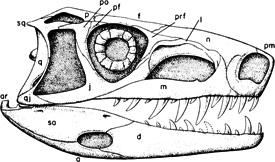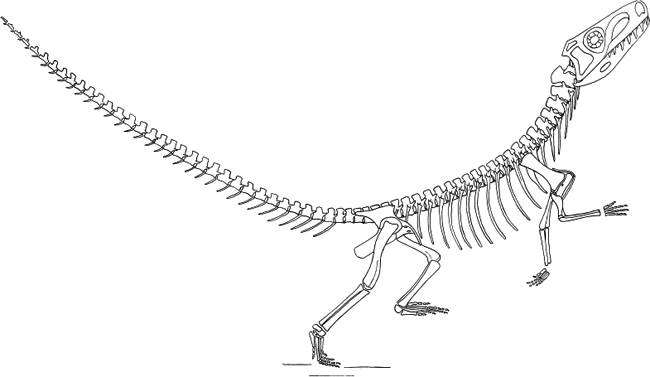
Euparkeria
A close archosaur relative
 Lateral view of the skull of Euparkeria. |
The body form of Euparkeria is unusual in that the relative length of its hind limbs to its forelimbs exceeds that of other comparable reptiles of its time. Some have suggested that Euparkeria may have been "facultatively bipedal" (Carroll 1988), and able to run on two legs for short distances as pictured below.
The systematic position of Euparkeria is problematic. The question of its relationships hinges upon the structure of the ankle joint, a pivotal character in understanding the evolution of archosaurs. Whatever the actual case was, there is general agreement that it is either the sister group to all other Archosauria, or is part of the lineage leading to the dinosaurs.
 Dorsal and ventral views of the skull of Euparkeria. |
 Skeletal restoration of Euparkeria in a bipedal running posture. |
Sources
|
||
Text by Brian R. Speer, 10/1997. Euparkeria images used with permission of the Royal Society of London: from Ewer, R.F. 1965. The anatomy of the thecodont reptile Euparkeria capensis Broom. Philosophical Transactions of the Royal Society of London, B 248:379-435.